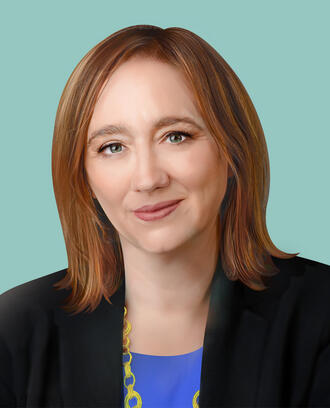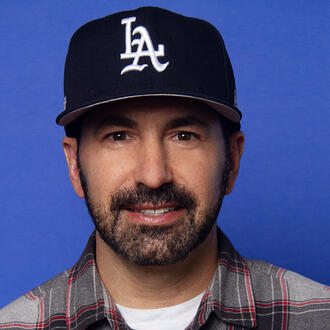Credit: Stephen Sauer
Ideas Made to Matter
Why this social change agent wants you to ‘fail better’
By
“Improved failure” might sound like an oxymoron. Not for Kara Penn, who explains how bold managers can exploit, design, and use failure as an asset in “Fail Better: Design Smart Mistakes and Succeed Sooner,” which she co-wrote with MIT Sloan senior lecturer
As founder and principal consultant at Denver-based Mission Spark, Penn harnesses ideas from community development, management, and systems thinking to improve the social sector — a nod to her previous positions as a counselor at a juvenile detention facility, business advisor to low-income Southeast Asian artists, and nonprofit consultant.
We talked with Penn, MBA ’07, about the power of collaboration, the role of reflection in generating ideas, and why we all need to be systems-thinkers.
What inspires you?
Diversity of people, places, and experience inspires me by pushing me to see the world differently and to consider a problem from multiple approaches and viewpoints.
My firm, Mission Spark, focuses on systems-level change for social good, through collaborative process and organizational strategy. Many of the challenges we work on — from mental health to gun violence prevention to hunger reduction to education — have complex origins. We’re able to bring individuals together from many different backgrounds, including those with lived experience, those providing services on the ground each day, and policymakers and system leaders.
I’m inspired by collaborative efforts to work through these challenges together.
Who inspires you?
I am inspired by social impact and community leaders who continually challenge the status quo and bring creative solutions forward.
I’m part of Hustle Fund (co-founded by one of my MIT Sloan classmates, Elizabeth Yin), which makes angel investing more diverse and accessible, and I find a lot of inspiration in how the entrepreneurs I am exposed to seek to solve complex problems with relatively simple solutions that can scale. I am motivated by their big visions, execution, and application of technology.
I’m also inspired by my husband, Dr. Adit Ginde, who with colleagues, has been working on designing and implementing clinical trials tracking vaccine effectiveness and testing treatments for COVID-19. And my four daughters, aged one to eleven, inspire me to have more play and creativity in my life.
Where do you get ideas?
I co-authored “Fail Better” with Anjali Sastry because we were curious about why some efforts succeed and others fail. We explored how adults learn, the role of failure in new ideas, and factors both structural and mindset-driven that contribute to outcomes.
Related Articles
We developed a method and a set of tools that really use the sandbox of your everyday project-based work as the driving force of new ideas and experimentation, and in doing so also design for risk-taking at a level you can absorb.
I also am surrounded by mission-driven people who are highly motivated to address unmet needs in our society, and I get inspiration and ideas working with them.
How are new ideas discovered and developed in your organization?
One thing about the process described in “Fail Better” is creating space and time to embed the learning that comes out of the work we do every day. I’ve found that in my consulting work and in day-to-day life, this is the most overlooked part. We run off to the next thing without reflecting in structured ways and without judgment on what we’ve just experienced.
Mission Spark is celebrating its ten-year anniversary, so we’ve created some specific opportunities to reflect on our projects and pull out larger ideas and lessons. We also try to do this for our internal processes and approach. Right now, we have a project exploring and documenting our own best practices.
Through these efforts, we can all be more successful at codifying what’s working, while also generating the kernels of new ideas — finding what isn’t working, trying to solve for that, and putting it into practice.
When do you know it is time to abandon an idea?
I build in milestones and constraints. I think escalation of commitment comes into play with idea implementation — we put time and resources into it, and we just keep going because we’ve invested so much already. Designing a process by which checks and balances are in place is important; I set some of those at the outset to plan out go/no-go moments.
An objective accountability partner can help, too, by holding you to the milestones you’ve set out, including whether to continue, pivot or stop when a deadline is missed. Right now, I am that accountability partner for a founder of a new social venture that teaches social emotional skills through the voices and experiences of some of the world’s best athletes. She and I mapped out a timeline and some key milestones to revisit over the next year to ensure her strategies are leading to the growth in her organization that she seeks.
How do you know an idea is a good one?
I think many of us rely on market feedback, traction, and data to help inform the value of an idea. But at those very early stages where the “value” of the idea is untested, I really rely on the process by which an idea was developed. I work in a landscape that is more collaborative than competitive, and I think that affords a very open process by which to gather feedback and to refine and test ideas.
I have a deeply held core value that those who are impacted by a problem should be a vital part of informing and designing a solution. It also makes for a better outcome, because the solution is human-centered and responsive.
I also think beginning with the end in mind is important. Is an idea a “good” one if it doesn’t consider downstream effects? The threat of climate change is in the here and now; if we aren’t designing solutions to any problem without that in mind, I am not sure what we’re doing. We all have to be systems-thinkers, whether we have a natural inclination to that or not.
At MIT Sloan, we talk about ideas made to matter — ideas that are carefully developed and have meaningful impact in the world. In that context, what is your idea made to matter?
I’ve been really privileged to collaborate with a long-time friend and MIT Sloan alumnae and lecturer, and Mission Spark fellow Benjamin Swift, in designing and testing an approach to reducing politically driven polarization in America. Together, we designed and launched The Listening Challenge, a national effort that engages individuals with divergent political views in structured conversations to more deeply understand how their political beliefs formed and their vision for their country.
The desire to work on this effort emerged from seeing permanent rifts driven by differing political beliefs between family members and friends leading up to and following the 2020 presidential election. We wanted to think through how to build common ground and shared vision grounded in research — basically to move away from that sense of “other” that makes us dismiss the humanity of others who believe differently than we do. I’d love for readers of this column to give it a try!



